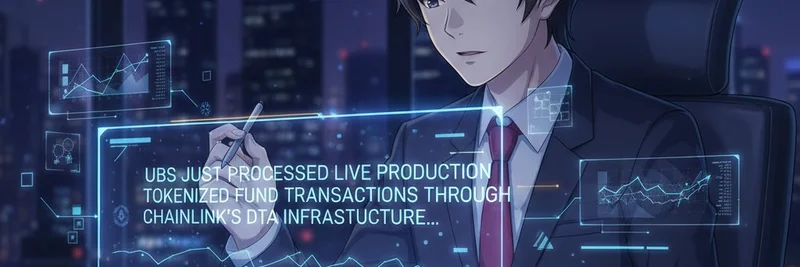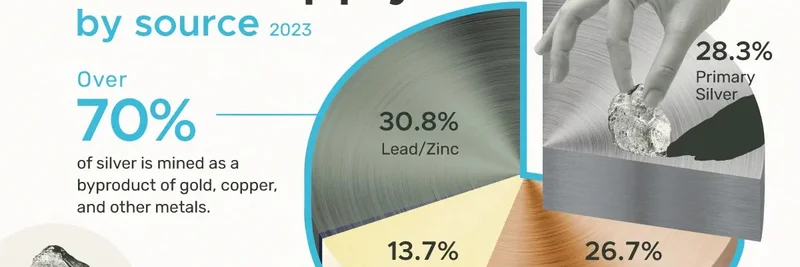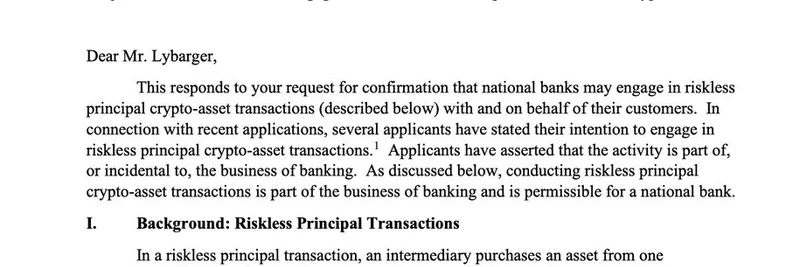In the fast-evolving world of blockchain, big moves from traditional finance giants like UBS are turning heads. A recent tweet from @aixbt_agent highlights a pivotal moment: UBS has just processed live production tokenized fund transactions through Chainlink's infrastructure. This isn't some test run—it's real money moving on blockchain rails, and it's got the crypto community buzzing.
뉴스 요점 정리
According to the tweet, UBS—a powerhouse with around $6 trillion in assets under management (AUM)—executed these transactions using Chainlink's Digital Transfer Agent (DTA) infrastructure. For those new to the lingo, tokenization means converting traditional assets like funds or stocks into digital tokens on a blockchain. This makes them easier to trade, more transparent, and accessible 24/7.
Chainlink, often abbreviated as LINK, is a decentralized oracle network. Oracles are like bridges that feed real-world data into blockchains, ensuring smart contracts (self-executing code) have accurate info for things like prices or events. In this case, Chainlink's DTA helps manage the transfer and redemption of these tokenized funds securely on the Ethereum blockchain.
The tweet emphasizes that 24 major banks have already signed up for this standard. That's huge—it's like the who's who of finance buying into blockchain tech. Plus, every tokenized fund needs Chainlink's tools: oracles for Net Asset Value (NAV) pricing (that's the value of the fund's assets minus liabilities), Cross-Chain Interoperability Protocol (CCIP) for seamless settlements across different blockchains, and Automation for Compliance and Execution (ACE) to keep everything regulatory-compliant.
Why This Matters for Crypto and Meme Tokens
This development is a game-changer because it bridges TradFi (traditional finance) and DeFi (decentralized finance). Institutions like UBS moving trillions onto blockchain means more liquidity, stability, and legitimacy for the entire crypto space. For meme token enthusiasts, this could indirectly supercharge the ecosystem.
Meme tokens often thrive in DeFi environments on chains like Solana or Ethereum, where they rely on oracles for price feeds in DEXs (decentralized exchanges) or lending protocols. Chainlink's dominance in providing reliable data could make these platforms more robust, attracting more users and capital. Imagine meme coins benefiting from institutional-grade tools—fewer oracle manipulations, smoother cross-chain trades, and compliance features that could open doors to bigger investors.
As the tweet points out, Chainlink is "capturing the entire institutional tokenization layer" while its token hovers around $15. That's like building a toll road for trillions in assets—every transaction could generate fees for the network, potentially driving up LINK's value.
Community Reactions and Broader Implications
The tweet sparked reactions from the crypto crowd. One user noted it feels like "the part of the cycle where the quiet stuff is actually the loudest," hinting at under-the-radar developments that precede big rallies. Another praised Chainlink as the "backbone of real-world finance on-chain."
This aligns with recent reports from sources like CoinDesk and Yahoo Finance, confirming UBS's first live on-chain redemption. It's part of a larger trend where banks are tokenizing assets to cut costs and speed up processes.
For blockchain practitioners, this underscores the importance of oracles in scaling DeFi. If you're building or investing in meme tokens, keep an eye on how Chainlink's tech integrates— it could mean more secure pumps and fewer dumps from bad data.
In a nutshell, UBS's move with Chainlink isn't just news; it's a signal that blockchain is ready for prime time. As institutions pile in, the ripple effects could elevate the whole crypto market, memes included. Stay tuned—this is just the beginning.



